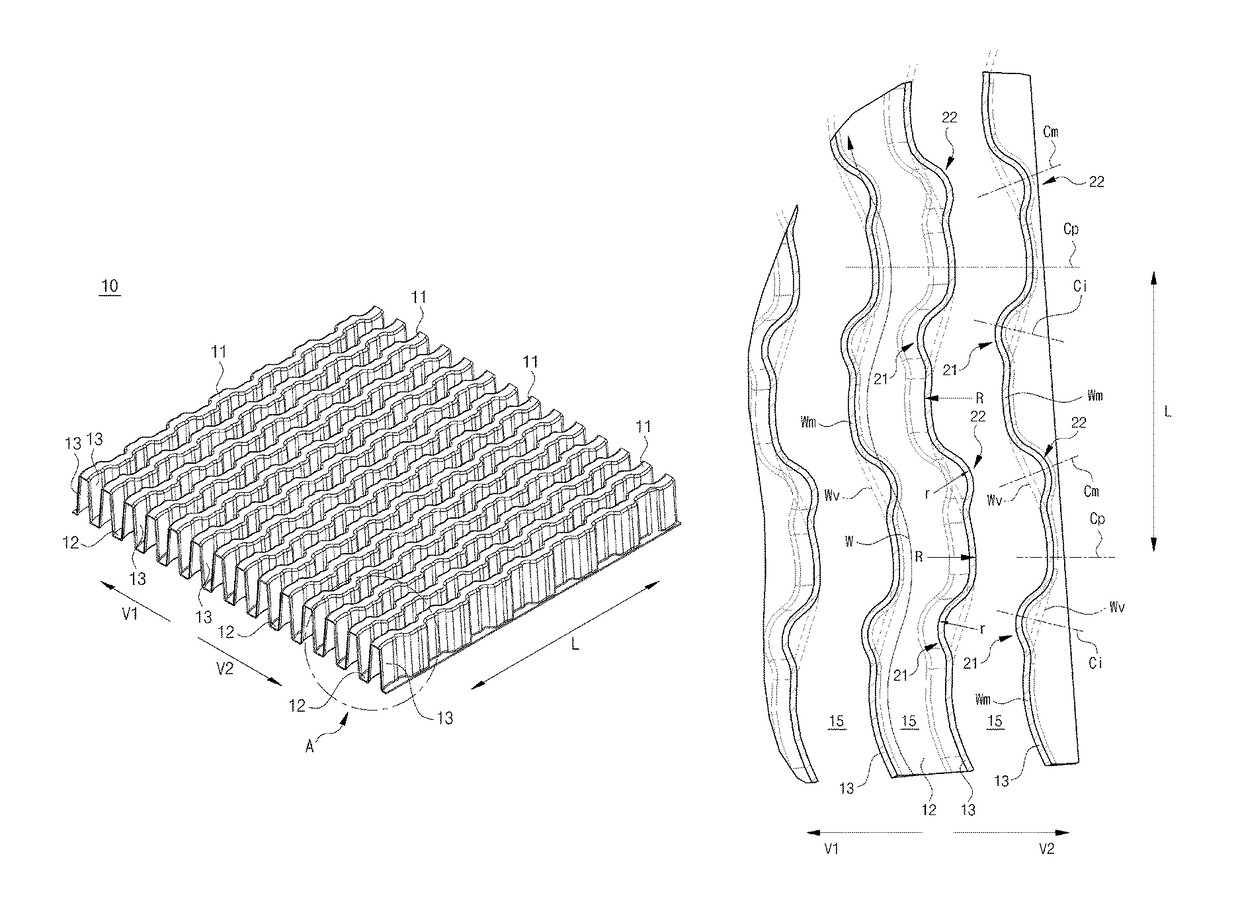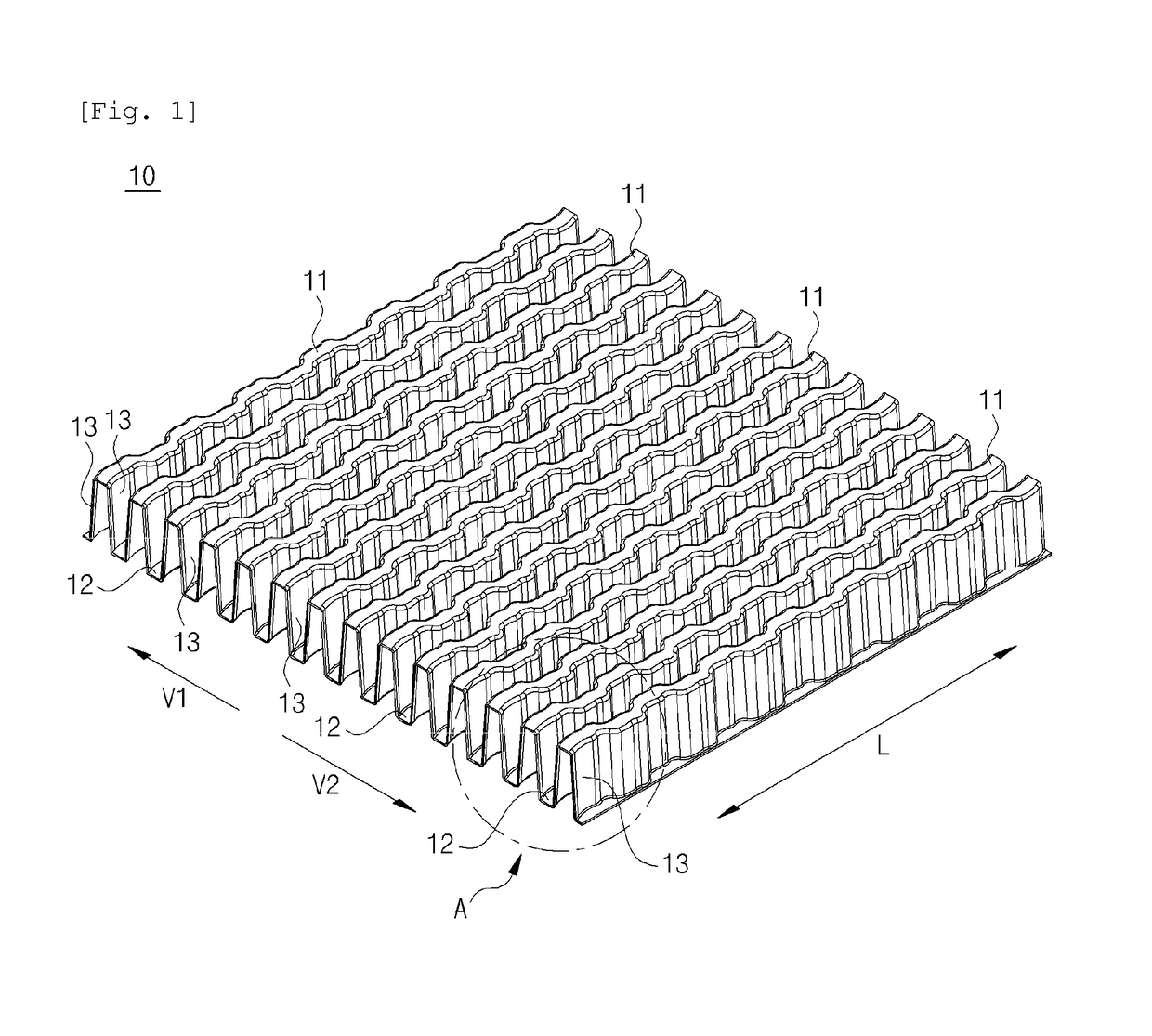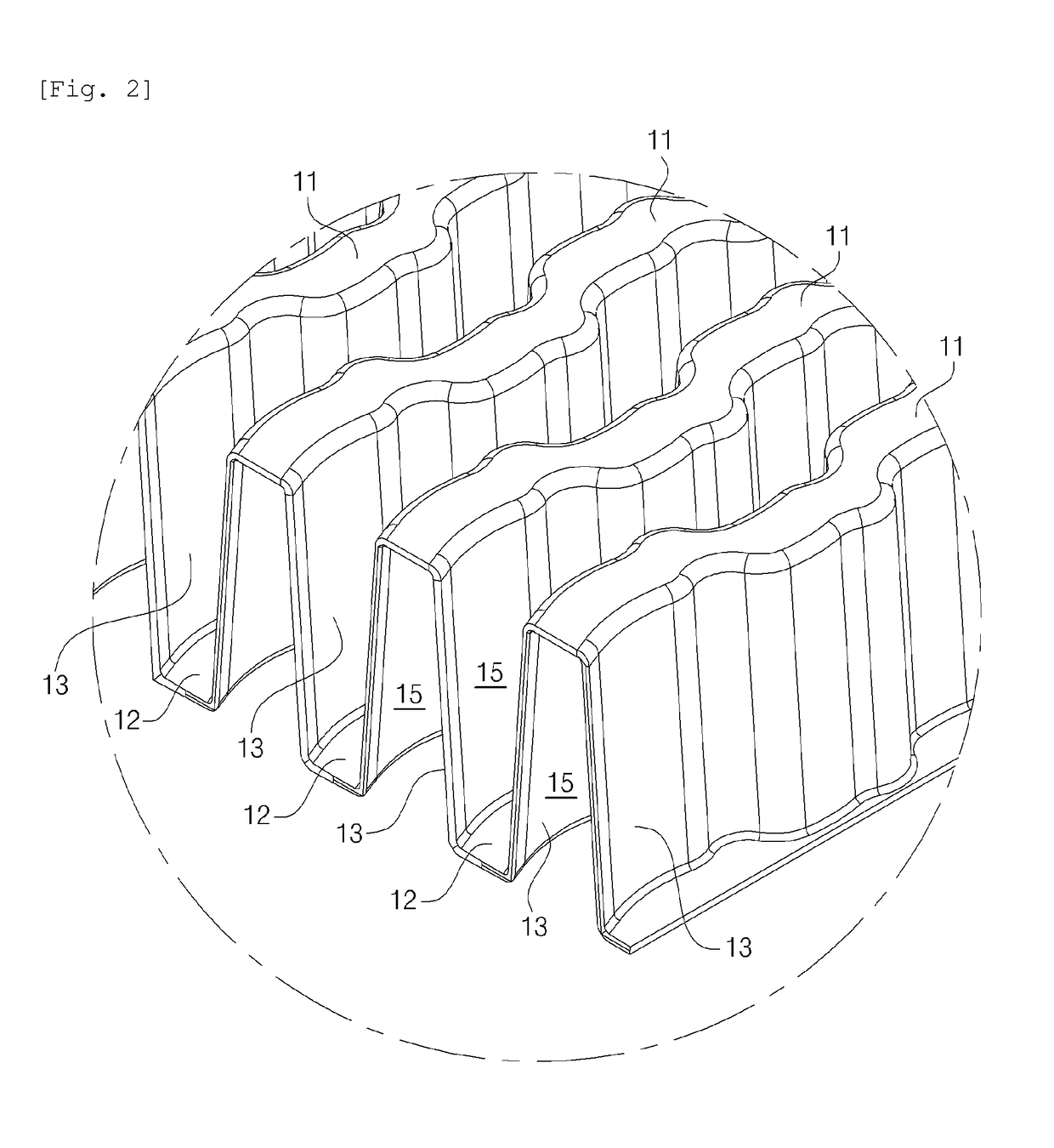Wave fins
a technology of wave fins and fins, which is applied in the direction of tubular elements, lighting and heating apparatus, laminated elements, etc., can solve the problems of loss of kinetic energy during fluid flow, the turbulent kinetic energy of fluid that passes through individual fluid passages is not substantially enhanced, and the fluid heat exchange efficiency is improved. , to achieve the effect of increasing the turbulent kinetic energy and improving the heat exchange efficiency of fluid
- Summary
- Abstract
- Description
- Claims
- Application Information
AI Technical Summary
Benefits of technology
Problems solved by technology
Method used
Image
Examples
Embodiment Construction
[0028]Hereinafter an exemplary embodiment of the present invention will be described in detail in conjunction with the accompanying drawings.
[0029]FIGS. 1 to 6 are views showing wave fins according to an embodiment of the present invention.
[0030]As shown in the figures, the wave fins 10 according to the present invention include a plurality of hills 11 and a plurality of valleys 12 which continuously extend at preset distances along transverse directions V1 and V2 of the wave fins 10. The plurality of hills 11 is connected to the plurality of valleys 12 via a plurality of sidewalls 13 in the transverse direction.
[0031]The wave fins 10 have a plurality of fluid passages 15 which are partitioned by the plurality of sidewalls 13. The upper ends and lower ends of the fluid passages 15 are alternately closed by the plurality of hills 11 and the plurality of valleys 12.
[0032]As shown in FIGS. 4 and 5, each of the fluid passages 15 may form a trapezoidal cross-sectional structure as the si...
PUM
 Login to View More
Login to View More Abstract
Description
Claims
Application Information
 Login to View More
Login to View More - R&D
- Intellectual Property
- Life Sciences
- Materials
- Tech Scout
- Unparalleled Data Quality
- Higher Quality Content
- 60% Fewer Hallucinations
Browse by: Latest US Patents, China's latest patents, Technical Efficacy Thesaurus, Application Domain, Technology Topic, Popular Technical Reports.
© 2025 PatSnap. All rights reserved.Legal|Privacy policy|Modern Slavery Act Transparency Statement|Sitemap|About US| Contact US: help@patsnap.com



